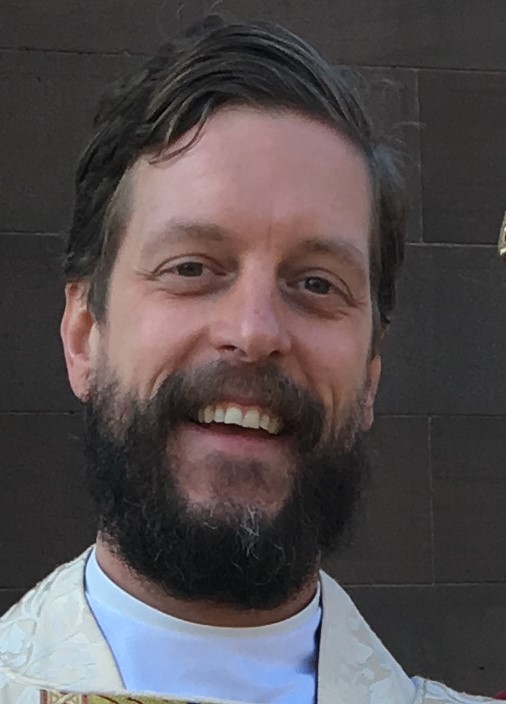The Cold Springer - Week of May 12, 2019


Sunday, May 12th, 2019 - Holy Baptism
The Father and I are One
At that time the festival of the Dedication took place in Jerusalem. It was winter, and Jesus was walking in the temple, in the portico of Solomon. So the Jews gathered around him and said to him, "How long will you keep us in suspense? If you are the Messiah, tell us plainly." Jesus answered, "I have told you, and you do not believe. The works that I do in my Father's name testify to me; but you do not believe, because you do not belong to my sheep. My sheep hear my voice. I know them, and they follow me. I give them eternal life, and they will never perish. No one will snatch them out of my hand. What my Father has given me is greater than all else, and no one can snatch it out of the Father's hand. The Father and I are one." From the Gospel of John
This Sunday, the 4th Sunday in Lent, is called Good Shepherd Sunday, and this year we hear a particular portion of Jesus’ self-portrait as such. Certainly the most profound statement comes at the very end of this passage: “The Father and I are one.”
Many Christians believe and say that Jesus is God, that he is the only Son of God, and that he is one person of the Trinity: equal to God and the Holy Spirit. The truth is - because in faith we assent to things that are mystical - it’s often easier to believe and say that “Jesus is Lord!” then it is to explain it. Your on the subway, or the LIRR, or at a dinner party, someone sees your cross pendant or learns that you attend St. John’s Church: “So, I’ve always wondered, how are Jesus and God one?” You want to answer, you want them to join you on this discovery of Good News, but “umm… he, uhhh… they are like… it’s similar to… you know what I mean, right?”
How many of us are expert theologians? Philosophers? Meta-physicists? But why answer like a PhD when Jesus wasn’t speaking like one? When he said, “The Father and I are one,” he wasn’t moving in the world of philosophy or metaphysics or abstraction, he was moving in the world of personal relationships.
The unity of God and Jesus was (is) real because Jesus was in a relationship with God; a relationship that was defined by love, obedience and action. We are still reading about Jesus, praying to Jesus, trying to understand who Jesus is in our lives because Jesus was (is) the perfect example of how we might be in relationship with God and one another. In Jesus’ life, death and resurrection we discover a way of being one with God and with each other.
We must love. Not the romantic, starry eyed love. Not the same way we love ice cream, but a love that is reflected in Paul’s letter to the Corinthians: “Love is patient, love is kind. It does not envy, it does not boast, it is not proud. It does not dishonor others, it is not self-seeking, it is not easily angered, it keeps no record of wrongs. Love does not delight in evil but rejoices with the truth. It always protects, always trusts, always hopes, always perseveres.”
We must be obedient to God. That we are called to obedience isn’t easy to hear. Harder to do. But Jesus modeled it for us in his own life - in his relationship to his Father - and we set it as an aspiration. To make obedience an easier pill to swallow, let’s describe it as honing an awareness of God’s presence in our lives. It requires looking and listening to discover where we are needed or being called. We listen to and read scripture. We seek a still small voice in the silence of our hearts. We look for God’s presence and call to us in the community of our church and our towns and nation. We talk to our friends and confidants. If we believe that the Spirit is moving in our lives, what God wants for us will be revealed.
The final part of our relationship to God and one another: we must respond to God’s presence and call to us, we must act. This active response is the work of the Kingdom, the labor and the harvest of it’s fruits. By claiming that he and God are one, Jesus reveals that they are united in the work God has given him to do. In the language of the church and of theologians, you might say that Jesus and God have one essence, that’s cool. But the fact that thier unity is expressed in shared work, the work of salvation, is a crucial point. When we join in that work with Jesus, with God, and with our brothers and sisters in faith, we are drawing closer together in unity.
When we love and listen and respond to God and one another we are becoming the answer to Jesus’ prayer from John 17: “Holy Father, protect them in your name that you have given me, so that they may be one, as we are one.” When our love brings us into an awareness of God and neighbor and we work for the health and wholeness of creation we come together in divine union.
This union, which brings new life, is what we are seeking to understand in the season of Easter: that resurrection isn’t only what happened when Jesus was raised from the dead. The resurrection also continues in the faith and work of the church as God continues to eliminate darkness and defeat death. Christ is Raised. And we are being raised as well.
Peace and All Good!
The Rev. Jesse Lebus

Children’s Chapel
The Parable of the Sower is on deck for this Sunday. It's in keeping with the theme of seeds and the season of resurrection and rising. The story is certainly about someone who sows seeds, an allusion to agriculture that many who heard Jesus speaking would have been familiar. It is also about soil. Many seeds may be sown, but if the soil isn't just right they won't take. Jerome Berryman, the founder of the Goldy Play movement, in his book Teaching Godly Play: How to Mentor the Spiritual Development of Children, writes:
"Only those who have the ears to hear will hear. This is why it is important for children to encounter parables during childhood so they can develop the ability to hear with their own ears what Jesus was communicating when he spoke in parables. The fundamental wondering questions for the parables are variations on: ‘I wonder what this could really be?’ It implies that there is more to what is real than ordinarily meets the eye."
It doesn't take musch for children to see what is really being said.
Little Saints & Elements of Faith
This week our students in these classes (different classrooms) will continue to use the theme of seeds to explore how the act of sharing resources can help us to grow in relationship to God and each other. They will also be introduced to the catechism or the teaching of our faith that is outlined in the Book of Common Prayer (p845) through a series of questions:
- What are we by nature? We are part of God's creation, made in the image of God.
- What does it mean to be created in the image of God? It means that we are free to make choices: to love, to create, to reason, and to live in harmony with creation and with God.
Finally, they will make bird feeders, from suet and seeds, that will be hung from the trees on the church patio.
Tags: Youth Formation & Worship / Youth & Families / Opportunities for Youth & Family Fellowship